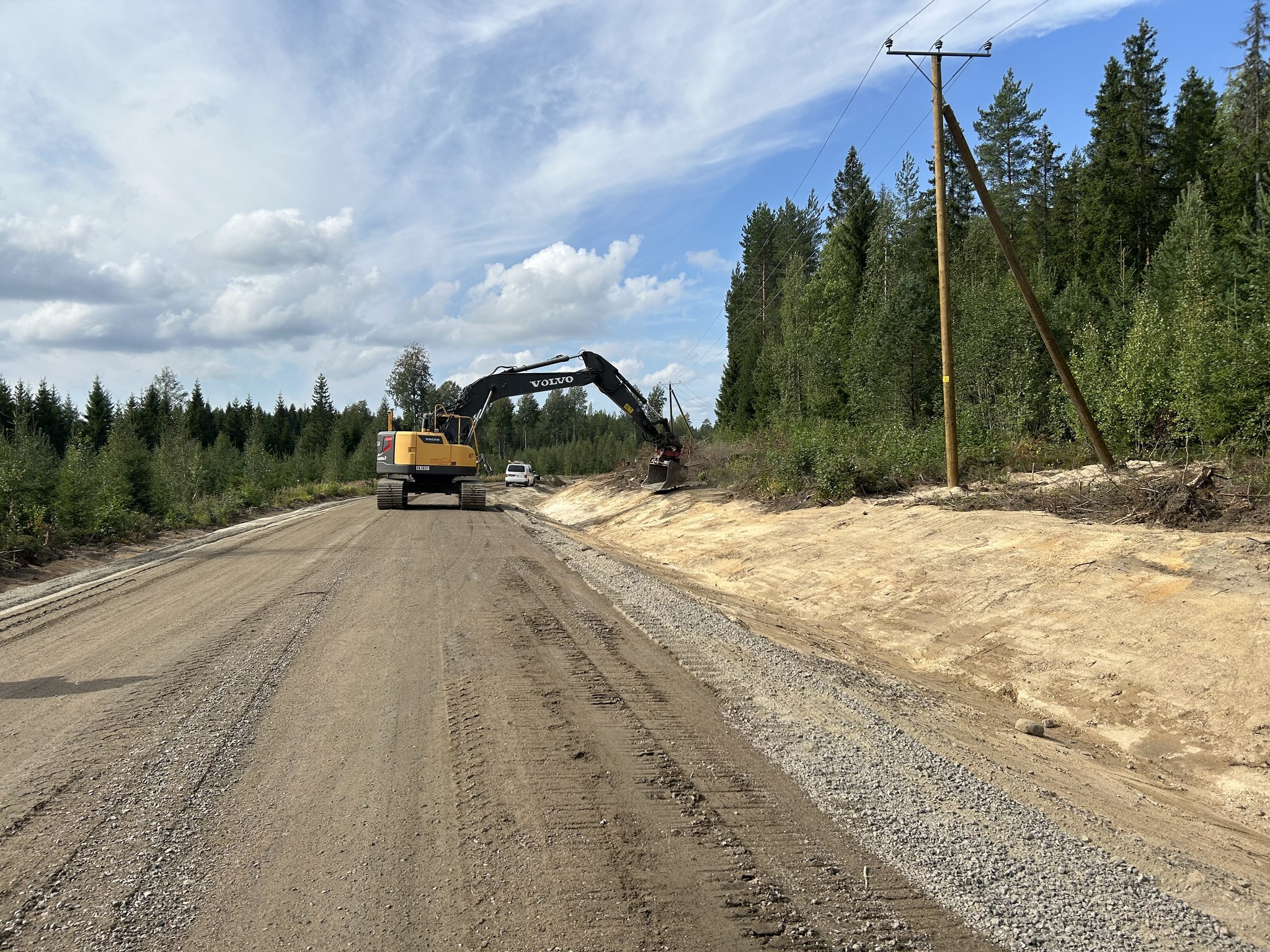In addition to ore and stones quarrying results in a large amount of a b-product called gangue. Gangue can be considered waste, as such a large amount is produced. It must be stored somewhere as there is usually no use for it. But as the saying goes, one man's trash is another man's treasure. The Finnish Transport Infrastructure Agency and the Centre for Economic Development, Transport and the Environment for Southeast Finland are currently building a few sections of gravel road to test whether gangue could be used as material for constructing gravel roads.
The pilot currently consists of three sections measuring approximately 250 metres on road 14748. This test section had previously suffered from frost and frost heave, which is why its structure was improved with gangue. The pilot will also make extensive use of existing materials and structural layers. Southeast Finland has an extensive quarrying industry, so there is plenty of construction material for gravel roads for the needs of the pilot.
The suitability of gangue as a construction material will be tested on the three different sections in different ways. On one section the load-bearing layer and a wearing layer are completely reconstructed from gangue. This section is experimental, as gangue crushed rock is not the same as crushed rock commonly used on gravel roads in all its characteristics, especially with regard to the wear layer. In the second section, the gangue will be mixed with the road's original wear layer. In the third and final section only the load-bearing layer will be improved, while the wear layer will remain unchanged.
The test sections were built this year. The development of road conditions on these sections will be monitored for a preliminary period of five years.
"The use of gangue on gravel roads has been tested previously as well, but there have been shortcomings in the monitoring of the results. The development and load-carrying capacity of the road will now be monitored in the long term," explains Jouni Marjaniemi, Road Structure Expert at the Finnish Transport Infrastructure Agency.
Although the monitoring is only in its early phases, the pilot has already produced first impressions. Based on the preliminary results, the gangue functions quite well, at least as a load-bearing layer material on gravel roads. However, research data covering a longer period of time is needed. For example, there is no information as of yet on the impacts of different seasons on the material life cycle.
Stone is cheap, work and transport expensive
The use of gangue on gravel roads is not completely problem free. If it were easy, gangue would have been used for a long time as a building material. The problems are related to costs and the structure of gangue. Gangue is not necessarily suitable in its original form as a construction material for gravel roads, due to factors such as its gravel size. If the gangue has to be modified extensively, costs will increase. The costs must be reduced, as the quarrying of crushed rock for gravel roads is cheap.
"The aim would be to get gangue in a form that, with as little modification as possible, would be suitable for gravel roads. This process is now under development," says Marjaniemi.
In addition to material costs, transport costs must be kept low. The transportation of heavy loads causes emissions and is expensive. For this reason, it is not advisable to pick up material like crushed for the site rock from far away. Especially in areas close to the quarrying industry, excess rock material could serve as construction material for gravel roads thanks to short transport distances.
Less excavation in the future?
Economic aspects play an important role in the utilisation of gangue, but the reduction of emissions and protection nature are objectives that are at least just as important.
"The use of gangue can replace virgin rock materials and thus reduce the consumption of non-renewable natural resources," says Henna Teerihalme, an expert in circular economy and recycled materials at the Finnish Transport Infrastructure Agency.
At the moment, there is still little use of gangue as construction material for gravel roads. In the future, gangue may play a larger role in the building of gravel roads if the obstacles to the use of gangue can be resolved.
"The bigger goal is to promote the circular economy and, at the same time, increase cost-efficiency in the maintenance of gravel roads and structural improvement sites," says Marjaniemi, from the Finnish Transport Infrastructure Agency.
The pilot carried out by the Finnish Transport Infrastructure Agency and the ELY Centre is based on Kristiina Koski's Master's thesis, published in 2024, "Use of leftover stone from the natural stone industry of Southeastern Finland in low volume roads". Kristiina Koski is involved in the pilot as an employee of the contractor Destia.

